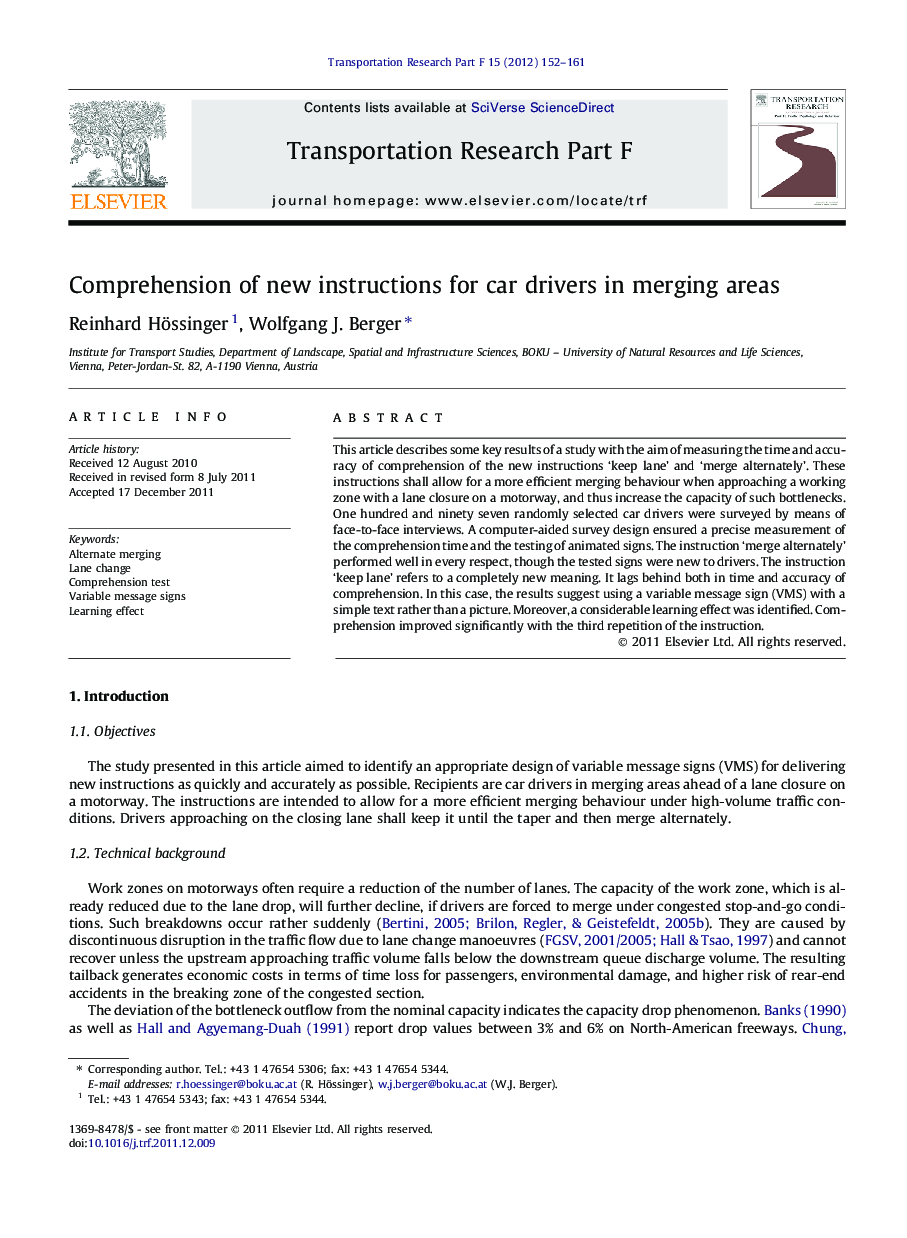| کد مقاله | کد نشریه | سال انتشار | مقاله انگلیسی | نسخه تمام متن |
|---|---|---|---|---|
| 897952 | 915211 | 2012 | 10 صفحه PDF | دانلود رایگان |

This article describes some key results of a study with the aim of measuring the time and accuracy of comprehension of the new instructions ‘keep lane’ and ‘merge alternately’. These instructions shall allow for a more efficient merging behaviour when approaching a working zone with a lane closure on a motorway, and thus increase the capacity of such bottlenecks. One hundred and ninety seven randomly selected car drivers were surveyed by means of face-to-face interviews. A computer-aided survey design ensured a precise measurement of the comprehension time and the testing of animated signs. The instruction ‘merge alternately’ performed well in every respect, though the tested signs were new to drivers. The instruction ‘keep lane’ refers to a completely new meaning. It lags behind both in time and accuracy of comprehension. In this case, the results suggest using a variable message sign (VMS) with a simple text rather than a picture. Moreover, a considerable learning effect was identified. Comprehension improved significantly with the third repetition of the instruction.
► The importance of comprehension tests regarding new traffic signs is confirmed.
► Instructing drivers by new signs to behave different than usually is challenging.
► Only the 3rd repetition of new instructions yields significantly better comprehension.
► For transmitting new instructions textual information proves better than pictorial.
► New traffic signs are well understood if the behavioural rule is basically known.
Journal: Transportation Research Part F: Traffic Psychology and Behaviour - Volume 15, Issue 2, March 2012, Pages 152–161